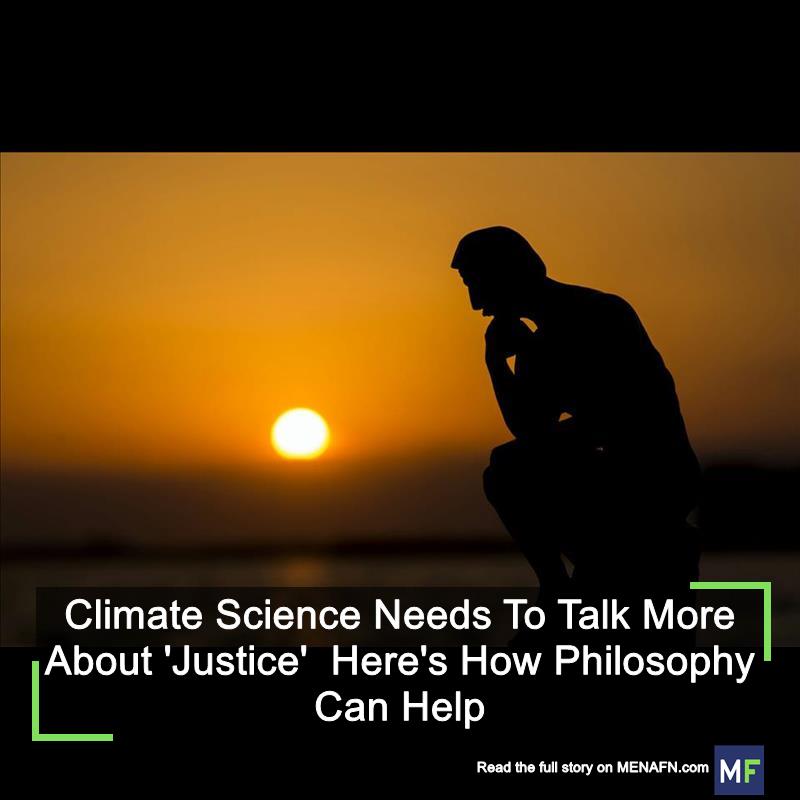
Climate Science Needs To Talk More About 'Justice' Here's How Philosophy Can Help
This leads to confusion. Consider by how much a given country should cut its emissions. If I say a plan is fair and you say it's unfair, but we don't have an explanation of what our underlying assumptions are, we'll just end up talking past each other.
Scientists recognise this challenge and have been calling for shared justice language they can use.
As a philosopher, I helped answer this challenge by contributing to recent research which lays out justice language for climate scientists. Although it is intended for climate scientists, it can also be used in climate policy or by anyone trying to think more rigorously about climate change.
With a shared set of concepts, anyone can meaningfully discuss what assumptions they endorse – and why. We could think of it as a“how to” guide for climate scientists to use and understand justice language.
Share the wealthThe first form of justice we discuss is“distributional justice”, which asks how scarce resources should be shared.
Distributional justice involves deciding on multiple elements. For instance, what do we take to be the most morally important metrics when deciding something is just? It might be good health or access to energy, or self-reported wellbeing.
You can then consider what distributional“pattern” would be ideally just – for instance, should access to energy be exactly equal for everyone, or should it vary according to need for energy, capacity to use it, and so on.
What's the most just way to distribute polluting cars – and exposure to their pollution? NadyGinzburg / shutterstock
Once you provide an answer for a metric and pattern, you have a“theory of distributive justice” that can be used to evaluate some outcome.
For instance, one researcher might be interested in providing equal emissions to everyone in a country; another might want to make sure poor citizens have enough energy. In that example, emissions and energy are the metrics, while“equality” and“ensuring the poorest have enough” are the patterns.
Is the process fair?The second form of justice is“procedural justice”, which in terms of research means questioning whether the processes are fair. For instance, does the research include scholars with diverse viewpoints or backgrounds?
For decades, climate scientists have held that diversity is valuable. Having different people in the room is likely to change which questions get asked – partly because the impacts of climate change vary from place to place, and partly because people's experiences can lead them to ask different questions. Research that fails to recognise this diversity can miss this value.
It is also important for the legitimacy of international climate groups that their work reflects different nationalities. Efforts to improve inclusion have had some success but are ongoing . We believe they should be seen as improving procedural justice.
Making things rightThe third form of justice is“corrective justice”. This involves questions of who to hold responsible for climate change – for example, whether we should distinguish between oil buyers and the companies that sell oil. It means asking if those harmed by climate impacts should be compensated or restored to some previous state – and if so, how would this be decided?
For researchers working on carbon budgets, these kinds of consideration affect who is allowed to emit. If a country historically emitted a lot of greenhouse gases, that means it should have less leeway to emit today. Not only is that fairer, but countries that are especially vulnerable to climate change are often those which emitted little in the past .
The framework that comes out of these forms of justice is simple but powerful. Scientists can use whichever forms of justice they think most valuable for their work. And when disagreeing about which outcomes are just, they have precise language to pinpoint the source of the disagreement.
The shared language we have proposed can help us discuss justice in a more structured way. It can lead climate researchers to reflect on the assumptions embedded in their work. Because once you see where injustice is, that's where you can start to enact justice.

Legal Disclaimer:
MENAFN provides the
information “as is” without warranty of any kind. We do not accept
any responsibility or liability for the accuracy, content, images,
videos, licenses, completeness, legality, or reliability of the information
contained in this article. If you have any complaints or copyright
issues related to this article, kindly contact the provider above.


















Comments
No comment